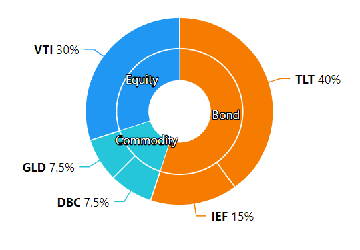Are you worried about the safety of your home network? Do you ever wonder if your personal information is truly secure in the digital realm?
In today's interconnected world, our homes have become more vulnerable than ever to cyber threats.
The consequences of a compromised home network can range from identity theft to unauthorized access to your smart devices, making it essential to take action.
Imagine for a moment that someone gains unauthorized access to your home network. They could access your files and financial information and even control your smart home devices.
It's a frightening thought. But fret not because, in this blog post, we're here to help you fortify your home network and protect your digital fortress.
We understand your concerns, and we're dedicated to guiding you through the process of securing your home network effectively.
Read this blog post to uncover the four must-have tips that enhance Your home network security.
Let's dive in!

A Guide to Improving Home Network Security
Securing your home network is crucial in today's digital world. It protects your personal information, devices, and family from online threats.
A well-protected network ensures your privacy and prevents cyberattacks. Our guide provides easy steps and tips to enhance your home network security, offering you peace of mind and a safer online experience.
Regularly Update Your Devices and Firmware
The first step in enhancing your home network security is to ensure that all your devices and network equipment are up-to-date.
This includes your computers, smartphones, routers, smart TVs, and other internet-connected devices.
Updating your devices and firmware offers several benefits. First and foremost, it patches known security vulnerabilities that hackers may exploit.
These vulnerabilities often arise in older software or firmware versions and can be an open door for cybercriminals.
Enable automatic updates whenever possible. This ensures that your devices stay secure without requiring your constant attention.
Before updating, backup your important data, just in case something goes wrong during the process. While updates are generally smooth, having a backup provides peace of mind.
Important Aspects to Remember
● When updating, prioritize security patches over optional updates
● Don't rely solely on automatic updates
● Periodically check for updates on your devices, especially those you use infrequently
Regularly Monitor Network Activity
Beyond setting up security measures, keeping a vigilant eye on your home network's activity is essential.
Regularly monitoring the devices and traffic on your network can help you spot any anomalies or unauthorized access.
Monitoring your network activity lets you promptly detect and respond to suspicious behavior.
If an unfamiliar device connects to your network or there's a sudden surge in data usage, you'll be alerted to investigate further.
Use network monitoring software or apps designed for this purpose. Before implementing network activity monitoring, understand the capabilities and limitations of your chosen monitoring tool.
Important Aspects to Remember
● Set Up Alerts
● Regular Scans
Regularly monitoring your home network's activity is akin to having a security camera system in place
Implement Network Segmentation
Network segmentation is a strategy that involves dividing your home network into separate, isolated segments.
This approach minimizes the potential impact of a security breach, making it harder for an intruder to access sensitive areas of your network.
Network segmentation offers several advantages. It can isolate IoT (Internet of Things) devices from your primary network, reducing the risk of them being compromised and used as entry points for attackers.
If one segment is breached, it doesn't automatically give access to the entire network, limiting the damage.
To implement network segmentation effectively, ensure your router supports this feature. Most modern routers do, but you may need to configure it manually.
Before segmenting your network, plan out how you want to structure it. Consider the devices you have and the level of isolation you require for each segment.

Important Aspects to Remember
● Regularly Update Segmented Network
● Strong Access Controls
Network segmentation is like dividing your house into separate rooms with its own lock.
Invest in a Network Firewall
A network firewall is a critical security device that is a barrier between your home network and the outside world.
It examines incoming and outgoing traffic and determines whether to allow or block it based on predefined security rules.
A network firewall is your first line of defense against external threats. It filters out malicious traffic, preventing unauthorized access and protecting your devices from cyberattacks.
Invest in a dedicated hardware firewall or use a reputable software firewall on your router to maximize the benefits of a network firewall.
Configure the firewall to block unnecessary ports and services and regularly update its rule set to protect against emerging threats.
Before setting up a network firewall, familiarize yourself with firewall configuration and rule management.
Important Aspects to Remember
● Customize Firewall Rules
● Regularly Review and Update Rules
Investing in a network firewall is like having a dedicated security guard at your network's entrance.
Conclusion
Your home network's security is paramount in today's digital age. By implementing these Tips for Improving home network security, you take significant strides toward a safer online environment.
Your digital safety matters, and we encourage you to take action today. So, dear reader, are you ready to enhance your home network security?
The path is clear, and your online safety is within reach.


